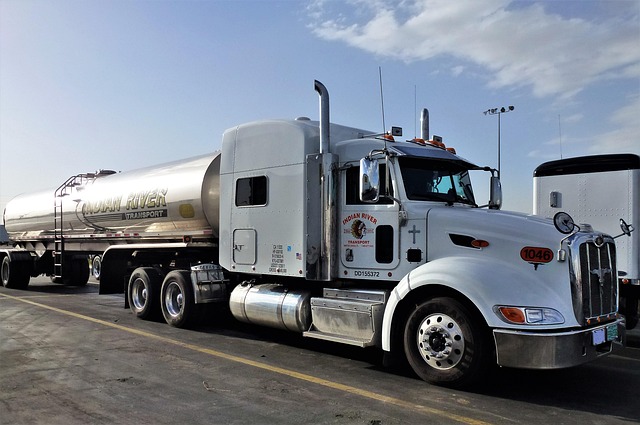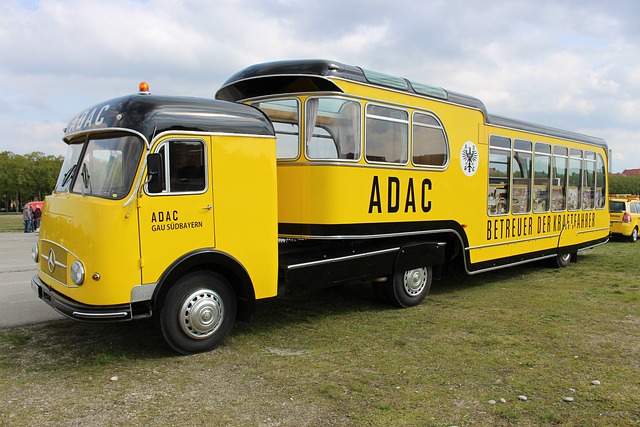Small fleet owners need to strategically select multi-truck coverage options to protect their investments and manage risks effectively in today’s digital age. By understanding various insurance plans, evaluating risk factors like usage patterns, driver experience, and vehicle age, businesses can choose policies offering adequate protection at competitive rates. Experts tailor these policies based on specific needs, including vehicle types and operational areas, ensuring flexible multi-truck coverage options for seamless protection of multiple vehicles. Balancing risk management with benefit maximization, fleet operators can craft tailored insurance strategies that minimize financial exposure while safeguarding assets.
“Unlocking the secrets to navigating insurance for your small fleet? This comprehensive guide offers expert insights into selecting premium insurance options. From understanding multi-truck coverage options and their intricate details, to identifying key factors that influence policy evaluation, you’ll discover a roadmap to managing risks effectively. We explore various types of coverage, dissect benefits and risks, and provide best practices to secure optimal insurance for your fleet, ensuring peace of mind on the road ahead.”
Understanding Multi-Truck Coverage Options: A Comprehensive Guide

Selecting the right multi-truck coverage options is crucial for small fleet owners looking to protect their investment and manage risks effectively. In today’s digital era, understanding various insurance plans is more accessible than ever before. Fleet managers should familiarize themselves with different coverage types, such as liability, collision, and comprehensive, tailored to their specific needs. These options ensure that in the event of an accident or damage, costs are covered, providing peace of mind on the road.
A comprehensive guide to multi-truck coverage involves evaluating the risks associated with each vehicle in the fleet. This includes considering factors like usage patterns, driver experience, and vehicle age. By carefully assessing these aspects, businesses can choose policies that offer adequate protection without unnecessary expenses. For instance, younger drivers or high-risk vehicles might require more stringent liability coverage, while older trucks could benefit from discounted rates based on lower mileage.
Key Factors Experts Consider When Evaluating Fleet Insurance Policies

When experts assess fleet insurance policies, several critical factors come into play. They start by evaluating the specific needs of the small fleet, considering the type and size of vehicles, their usage patterns, and the operational areas. This understanding is crucial for tailoring coverage that aligns with potential risks. For instance, a fleet specializing in long-haul transportation might require comprehensive multi-truck coverage options to address extended driving hours and varying road conditions.
Additionally, experts scrutinize the insurance provider’s reputation, financial stability, and claims settlement track record. They look for companies offering flexible policy structures that can adapt to evolving business demands. Multi-truck coverage options are of particular interest as they provide seamless continuity in insurance protection for multiple vehicles within a fleet, ensuring efficient operations without disruptions or gaps in coverage.
Navigating Risks and Benefits of Different Types of Coverage for Small Fleets

Navigating the complex landscape of insurance for small fleets requires a careful balance between understanding risks and seizing benefits. Each type of coverage, from liability to comprehensive, offers distinct advantages tailored to specific needs. For instance, multi-truck coverage options cater to businesses with multiple vehicles, providing broader protection against diverse risks associated with larger operations. This comprehensive approach ensures that a fleet’s total value is safeguarded, offering peace of mind for business owners.
At the same time, weighing the pros and cons of each coverage type is crucial. Business owners must assess their unique operational risks—such as cargo damage, driver liability, or vehicle theft—and choose policies that align with these potential pitfalls. By carefully considering the range of multi-truck coverage options available, small fleet operators can craft a tailored insurance strategy that minimizes financial exposure while maximizing protection for their valuable assets.
Best Practices for Securing Premium Insurance Coverage for Your Small Fleet

When securing insurance for your small fleet, a strategic approach is key. Begin by assessing your specific needs—does your operation involve long-haul trucking, local deliveries, or specialized cargo? This determination guides your choice of coverage options. Consider multi-truck coverage options tailored to fleet size and diverse operations, ensuring comprehensive protection for all vehicles.
Next, evaluate insurers offering competitive rates without compromising quality. Compare policy features, deductibles, and exclusions to find the best fit. Stay informed about industry trends and regulatory changes affecting insurance requirements, enabling you to make informed decisions. Additionally, leveraging industry connections and seeking expert advice from insurance brokers specializing in fleet coverage can provide valuable insights for making premium choices that align with your small fleet’s unique demands.
When selecting insurance for your small fleet, understanding multi-truck coverage options and leveraging expert insights are key. By evaluating risk profiles, comprehending various policy types, and adopting best practices, business owners can secure premium insurance that protects their investment and keeps operations running smoothly. Navigating these steps ensures a robust safety net for your fleet in today’s dynamic business landscape.
